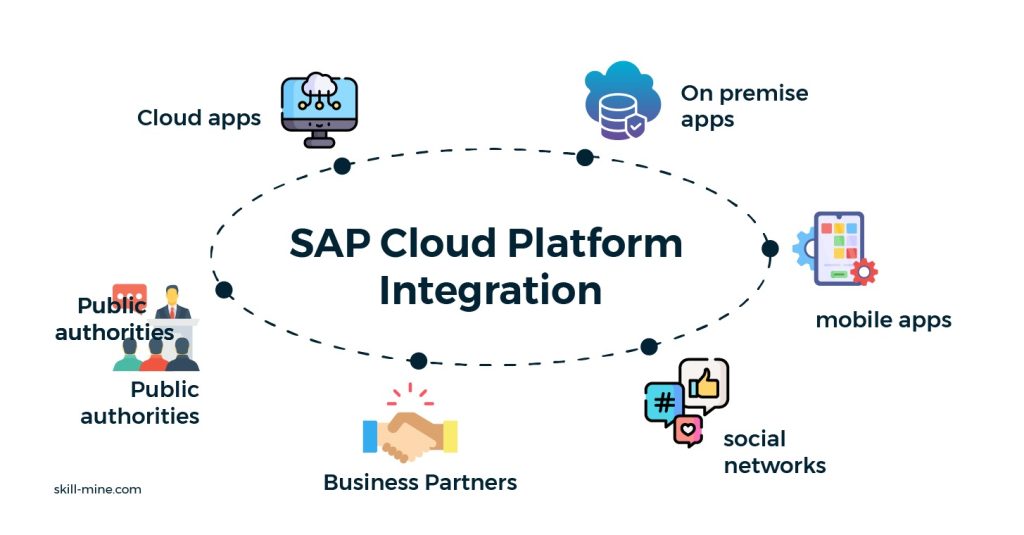Organizations are constantly seeking ways to improve their operations and stay competitive. One significant transformation that has gained immense popularity in recent years is the migration of SAP (Systems, Applications, and Products) to the cloud.
A survey by SAP insider has found that approximately 70% of SAP customers are considering or actively planning to move to the cloud. This shift represents a strategic move that can revolutionize how companies manage their enterprise resource planning (ERP) systems and data. With an increasing number of businesses recognizing the potential of SAP in the cloud, it’s crucial to explore the benefits, challenges, and deployment options associated with this technology-driven shift.
SAP is one of the world’s leading ERP software providers, assisting businesses in managing their processes, data, and resources effectively. Forbes reported that 77% of enterprises are using SAP to some extent, underlining the widespread adoption of SAP solutions in the business world. When SAP is hosted in the cloud, it offers a range of advantages that enhance its significance in modern business operations.
Benefits of SAP in the Cloud
- Cost Efficiency: One of the most significant advantages of hosting SAP in the cloud is cost savings. It eliminates the need for substantial upfront investments in hardware and infrastructure, allowing organizations to pay only for the resources they use. This pay-as-you-go model reduces both capital expenditures and operational costs.
- Scalability: Cloud-based SAP solutions offer unparalleled scalability. Businesses can easily adapt to changing workloads, expanding or downsizing resources as needed. This flexibility is especially valuable for organizations with seasonal fluctuations in demand.
- Enhanced Accessibility: With SAP in the cloud, users can access the system from anywhere with an internet connection, promoting remote work and improving collaboration among teams spread across different locations.
- Automatic Updates and Maintenance: Cloud providers take care of system maintenance, updates, and security patches. This ensures that organizations are always using the latest SAP versions and benefit from robust cybersecurity measures.
- Disaster Recovery: Cloud-based SAP systems offer robust disaster recovery capabilities. Data redundancy and backup solutions are built into the cloud infrastructure, minimizing downtime and data loss in case of unforeseen events.

Challenges of SAP in the Cloud
- Data Security Concerns: The cloud introduces new security challenges, and businesses must ensure that their sensitive data is adequately protected. Proper encryption, access controls, and compliance measures are essential.
- Integration Complexity: Migrating existing on-premises SAP solutions to the cloud can be complex. Ensuring seamless integration with other systems and data sources is a critical challenge that organizations need to address.
- Cost Management: While cloud services offer cost benefits, it’s crucial for organizations to monitor and optimize their cloud spending to avoid unexpected expenses.
- Compliance and Regulatory Issues: Businesses operating in highly regulated industries must navigate compliance challenges when migrating SAP to the cloud. Ensuring adherence to industry-specific regulations is vital.
Deployment of SAP in the Cloud
When deploying SAP in the cloud, organizations have several options to consider:
- Public Cloud: This option involves using cloud platforms offered by providers like AWS, Microsoft Azure, or Google Cloud. It offers scalability and cost-efficiency but may raise data security concerns for some businesses.
- Private Cloud: Organizations can build a dedicated, private cloud infrastructure for their SAP environment. This provides more control over security and compliance but may require higher initial investments.
- Hybrid Cloud: A hybrid approach combines both public and private cloud resources, allowing businesses to strike a balance between cost-effectiveness and data security.
- Managed SAP Services: Some businesses opt for managed SAP services from cloud providers, where the provider takes care of SAP infrastructure management, including updates and security.
Best Practices for a Successful SAP Initiative
- Prioritize business processes and requirements above all else
To conduct more thorough evaluations of SAP (Systems, Applications, and Products) options, companies should delve into the intricacies of their operational methods and identify their true requirements.
- Deploy strategies aimed at achieving a favorable return on investment (ROI)
Merely crafting a general business case to secure approval from upper management or the board of directors is insufficient for maximizing business benefits. While this step is vital and should be completed before committing to SAP services.
- Ensure efficient project management and dedicated resource allocation.
Successful SAP initiatives commonly share several traits, such as having a competent project manager in charge, involving internal subject matter experts, implementing a comprehensive risk management plan with mitigation strategies, and conducting periodic phase reviews throughout the process. If implementation is not progressing as expected or milestones are not being met, seeking assistance from SAP Managed services provider is advisable.
- Secure commitment from company executives.
Regular project reviews involving executive or steering committee members enable managers to promptly address emerging issues and maintain positive project momentum.
- Prioritize adequate training and change management.
When providing ERP functional training, the focus should be on imparting knowledge about business workflows and technical skills rather than just transactional operations. Adopting the “train-the-trainer” approach has proven to be an effective method for disseminating knowledge within the organization.
- 6. Harness the value of Conference Room Pilots (CRPs).
Functional and integration testing are pivotal stages to conduct before system deployment. Conference Room Pilot (CRP) sessions ensure that the software operates in line with designated specifications and that data flows accurately within the system. The value derived from CRPs significantly influences the success or failure of your SAP project.
Conclusion
SAP in the cloud represents a transformative step forward for businesses seeking to optimize their operations, reduce costs, and increase flexibility. While there are challenges to consider, the benefits of hosting SAP in the cloud far outweigh the drawbacks. As technology continues to evolve, embracing SAP in the cloud becomes not only a strategic choice but also a competitive necessity for organizations aiming to thrive in the digital age.
By carefully evaluating deployment options and addressing challenges proactively, businesses can harness the full potential of SAP in the cloud to drive innovation and growth. Skillmine’s SAP solutions empower businesses by streamlining operations, enhancing data-driven decision-making, and ensuring scalability.
Looking for expert technology consulting services? Contact us today.





